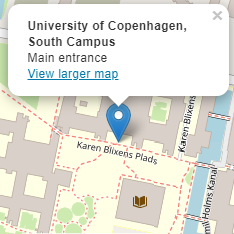From deadly disease to mild ailments
Sickness histories from the city of Gothenburg 1890-1950
Biohistory Seminar. In this seminar, Helene Castenbrandt will present her research with Bárbara Revuelta-Eugercios on the changing pattern of sickness among the members of two sickness funds in the city of Gothemburg in the period 1890-1950.
This paper uses the collective sickness histories of thousands of women and men working in the city of Gothenburg, Sweden, to shed light on the health transition in Europe during the late nineteenth and early twentieth century. Gothenburg is a port city with longtime focus on maritime trade, however, towards the end of the 19th century the city became more and more industrialized dominated by the textile and manufacturing industry, and in the 20th century the shipbuilding industry.
in the city of Gothenburg, Sweden, to shed light on the health transition in Europe during the late nineteenth and early twentieth century. Gothenburg is a port city with longtime focus on maritime trade, however, towards the end of the 19th century the city became more and more industrialized dominated by the textile and manufacturing industry, and in the 20th century the shipbuilding industry.
The expansion of associations to provide  mutual support in case of sickness took off in Sweden, as in many other European countries, as industrialization and urbanization in the 19th century changed the lives of the working population. However, while in places like Germany, these types of sickness funds became compulsory, the Swedish equivalents were voluntary associations until the state slowly placed them under its regulation during the first half of the 20th Century.
mutual support in case of sickness took off in Sweden, as in many other European countries, as industrialization and urbanization in the 19th century changed the lives of the working population. However, while in places like Germany, these types of sickness funds became compulsory, the Swedish equivalents were voluntary associations until the state slowly placed them under its regulation during the first half of the 20th Century.
This paper uses the sickness experiences of 3,708 members (men and women) of two such associations to investigate the age and gender differences in sickness diagnoses, how the diagnoses influenced the length of sickness cases and how diagnoses shifted over time.

